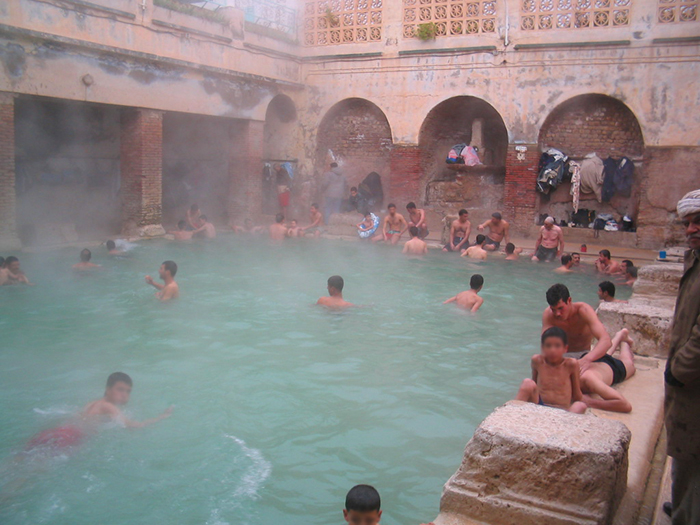Table Of Content

To check your vehicle and pay possible zone charges, visit the government website. "Water gives us a feeling of being held, and of being buoyant, which can literally change your perspective," Carmichael says. "Plus, the act of taking the time to bathe yourself is an act of self-care. It's like signaling to yourself that you are important and deserve some self-soothing."
Huge Ancient Roman Public Baths in 'Excellent' State Discovered in Augusta Emerita - arkeonews
Huge Ancient Roman Public Baths in 'Excellent' State Discovered in Augusta Emerita.
Posted: Sun, 23 Jul 2023 07:00:00 GMT [source]
I Plunged Into an Ancient Roman Bath for Two Hours to Finally Learn to Relax
Printed language sheets are available at the Roman Baths reception in a wide range of languages. One is near to the main reception before you buy your ticket, and the other is at the very end. Only backpacks up to a maximum of 30 litres are permitted to be brought into the Roman Baths; all bags must be kept with you at all times. For details of parking with electric car charging available, visit the Bath & North East Somerset Council website. The quickest and most straightforward route if you are travelling from a distance is likely to be via the M5 and M4 approaching Bath from the north. Clean air zone charges apply to higher emission buses and coaches (pre-euro 6/VI diesel and pre-euro 4/IV petrol).
Museum
You will first get a good view of the now roofless pool as you walk along the high walls and terraces built so that the public could visit the site. Here you can learn some general information about the discovery of the bath in the 18th century CE and the museum. Information is available to read at the information boards all through the museum, but you will also have been given a free audio guide at the entrance, which will give you additional exciting information. While the baths were designed to accept all comers, thus allowing for intermingling between social classes, genders rarely overlapped. The general arrangement was that women were allowed to go into the thermae while the men would be doing their jobs and men would enter the thermae once their work day was over. This generally resulted in women and children being the most common patrons from sunrise to 2-3 p.m., when the men would then head out to shed the stress of a hard day’s work in the early afternoon all the way into the evening.

Building layout
One of the primary reasons behind the social importance of Roman baths was their accessibility to all members of society. Regardless of social status or wealth, individuals could partake in the communal experience of bathing [3]. The baths provided a common ground where senators, merchants, soldiers, and even Roman slaves could come together and engage in shared activities, blurring the lines of social hierarchy. Another notable architectural feature of Roman baths was the inclusion of large windows and skylights to maximize natural light.
Architectural Merit
Acclaimed actors, musicians, and poets would entertain the bathers with their talents, enhancing the cultural ambiance of the baths and offering moments of artistic delight [3]. Small bathhouses, called balneum (plural balnea), might be privately owned, while they were public in the sense that they were open to the populace for a fee. Larger baths called thermae were owned by the state and often covered several city blocks. Fees for both types of baths were quite reasonable, within the budget of most free Roman males.
The 16th Century saw the addition of the Queen’s Spring in the southern portion of the complex. The next innovation to the complex occurred in the 17th Century and many of the structures within this area now bear a Victorian facade. Not too much is known about the construction of these baths but it’s assumed they were built in the first part of the 3rd century A.D.
Roman top header menu

Glass windows, which start showing up in the 1st Century CE also allowed for better temperature regulation while adding the option of sunlight as a heating mechanism. Early versions of the baths were heated with either water springs connected to geothermal vents or braziers. The first innovation in heating mechanics came in the 1st Century BCE and took the form of sub-floor heating chambers that were fueled by wood-burning furnances, known as hypocausts and prafurniae, respectively. While the Greeks had made this discovery before, the Romans did what they usually did and incorporated and improved upon existing ideas. While wealthy individuals might commission the construction of a small bathhouse for their circle of influence, known as a balneum, everyone used the stae-funded baths the Romans called thermae.
Water quality
The spring at Bath was known to the pre-Roman Celtic people of Britain, and it was presided over by the Celtic goddess Sulis. When the Romans arrived, they called the site Aquae Sulis, “waters of Sulis,” and created a spa that became famous throughout the Roman world. It included a colonnaded temple to the goddess of wisdom, Minerva, with whom the Romans identified Sulis. The facilities were gradually enlarged to accommodate the numbers of pilgrims who traveled from afar, and the complex remained in use until the fourth or fifth century, when Saxons gained control of the area. The bather would progress through the tepidarium, or warm room, and then through a set of increasingly hot baths (caldarium) to a bracing plunge in the cold bath (frigidarium) and finally a wallow in the warm, steamy water of the Great Bath. A passage (c) leads into the apodyterium (B), a room for undressing in which all visitors must have met before entering the baths proper.
The tepidarium in the women's baths had no brazier, but it had a hanging or suspended floor. One significant factor contributing to the decline of Roman baths was the decline of urban centers. With the fall of the Roman Empire, many cities experienced a decrease in population and economic activity. As a result, the maintenance and operation of public amenities, including baths, became increasingly difficult [2].
It’s one of the most popular tourist attractions in the region and receives well over 1 million visitors every year. Caracalla’s thermae would be the unofficial economic and civic center of the local province. Shops and offices were present throughout, and lecture theatres were available for teaching. The site also likely formed the base for athletes who could utilize the extensive gymnastics facilities. Just as Roman religious deities combined or mixed with local provincial gods, bathing traditions outside Italy combined Roman ideas with local preferences and ideas.
Together with the Moselle Bridge, the Porta Nigra, and the Amphitheater, they are included in a list of 9 monuments in the city of Trier as a UNESCO World Heritage site. This is especially remarkable because they were around A.D., the first few decades of Roman rule in Britain. They also remained operational until the final years of Roman rule in the 5th century A.D., quite an amazing track record. The picture, above, shows an artists impression of how a Roman bathhouse may have looked.
In 1910, Pennsylvania Station was opened in New York City, with a Main Waiting Room that borrowed heavily from the frigidarium of the Baths of Diocletian, especially with the use of repeated groin vaults in the ceiling. The success of the design of Pennsylvania Station in turn was copied in other railroad stations around the world. The changing room was known as the apodyterium (from Greek apodyterion from apoduein 'to take off').
The historian Suetonius even notes that the best time to ask emperor Vespasian for favors was immediately after his bath. The bath houses themselves were often broken up into several different unique rooms based on the type of bath one wanted to partake in. These included the basic apodyterium or the changing room along with the frigidarium or the cold bath room as well as the tepidarium or the tepid bath room and the calidarium or the hot bath room. From the tepidarium a door opened into the caldarium (E), whose mosaic floor was directly above the furnace or hypocaust.

No comments:
Post a Comment